Since our planet’s living conditions changed throughout existence, living animals adapted to this change or went extinct. Some animals have managed to adapt for millions of years and still exist today. What are the 13 oldest animal species still living on Earth?
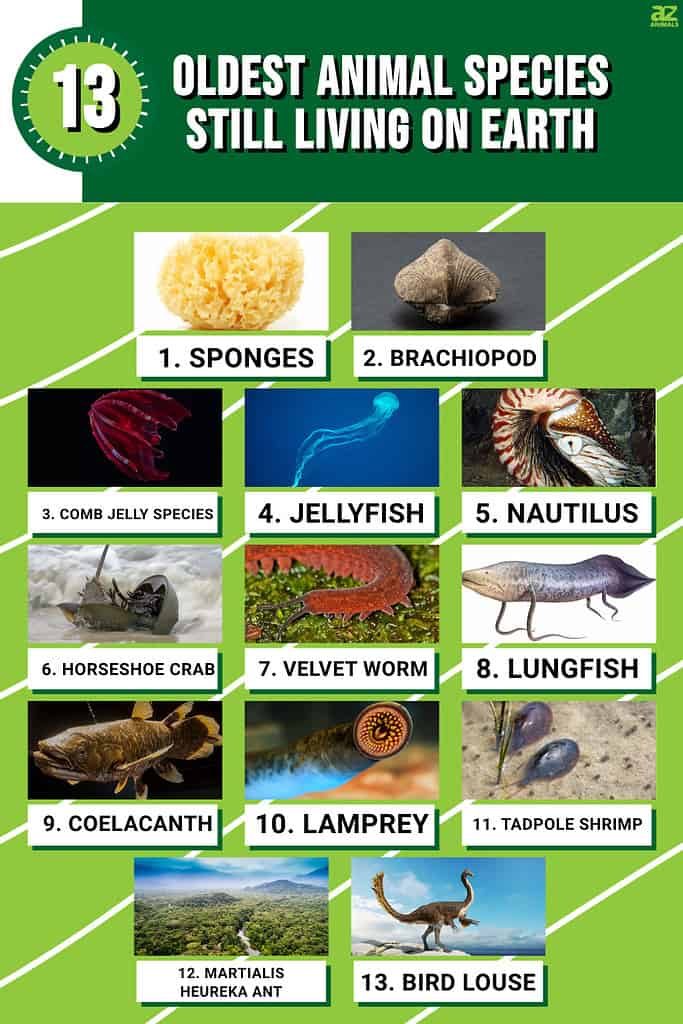
13 Oldest Living Animals on Earth
These are 13 of the oldest animal species still living on Earth:
- Sponge (Porifera)
- Brachiopod (Brachiopoda)
- Comb Jelly (Ctenophora)
- Jellyfish (Medusozoa)
- Nautilus (Nautilidae)
- Horseshoe Crab (Limulidae)
- Velvet Worm (Onychophora)
- Lungfish (Dipnoi)
- Coelacanth (Coelacanthiformes)
- Lamprey (Petromyzontiformes)
- Tadpole Shrimp (Triops)
- Martialis Heureka Ant (Martialis huereka)
- Bird Louse (Menoponidae)
13. Bird Louse: Animal Species Alive for 100 Million Years

The bird louse evolved to feed on feathered dinosaurs and they haven’t changed much in 100 million years.
©Dotted Yeti/Shutterstock.com
Bird lice have existed on the planet for around 100 million years. They survive on the skin, feathers, and scabs of bird populations around the planet. While they appear to be true lice to the untrained eye, they aren’t real lice because they’re wingless and don’t suck blood.
These bugs got their start by feeding on feathered dinosaurs which are the direct ancestors of the entire avian community on Earth. Since the birds a bird louse feeds on haven’t evolved in a manner that directly affects the insect’s feeding, these lice have survived almost unchanged.
12. Martialis Heureka Ant Species: Living 120 Million Years Ago
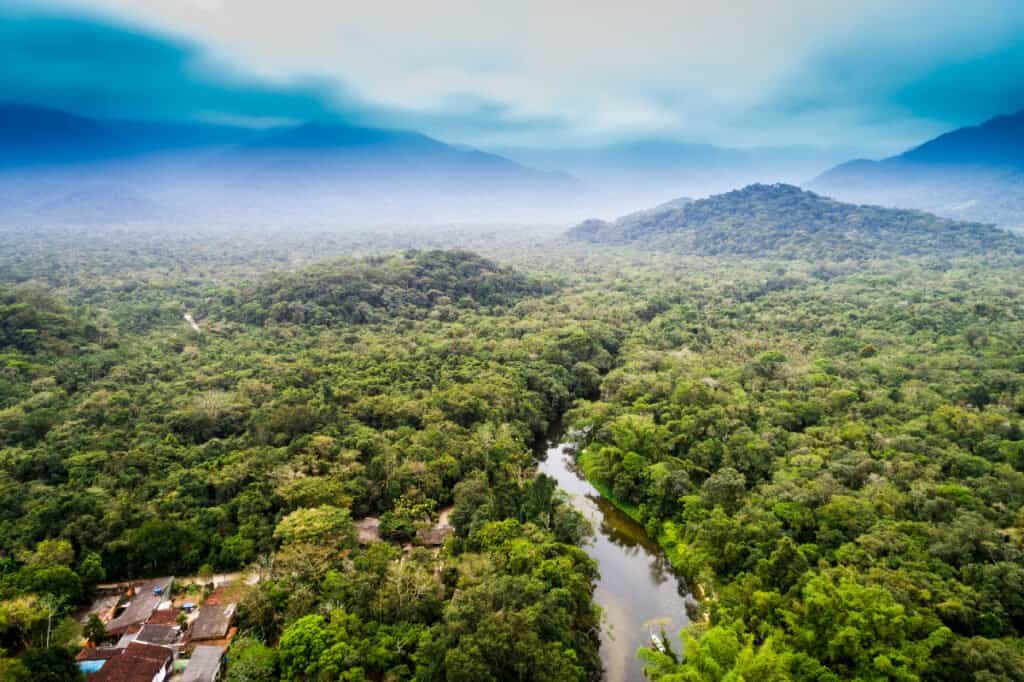
The Amazon Rainforest is home to Martialis heureka ants which have existed for around 120 million years.
©iStock.com/gustavofrazao
Martialis heureka ants were discovered in Brazil’s Amazon and they’re believed to have evolved into existence around 120 million years ago. They aren’t related to most other ants on the planet and probably came onto the scene at the same time modern ants diverged from a common ancestor.
Martialis heureka ants are blind and probably live underground or deep within forest floor litter. Only one individual has ever been found so not much is known about their lives. A few hundred new plant and animal species are discovered in the Amazon every year which means most haven’t been studied extensively.
11. Tadpole Shrimp: 200 Million Years on Earth

Fossilized Tadpole Shrimp that lived millions of years ago look almost exactly like the ones we see today.
©Repina Valeriya/Shutterstock.com
Tadpole shrimp make up some of the oldest animal species at about 200 million years old though their populations are declining. They are neither shrimp nor tadpoles despite their appearance. They’re crustaceans that make good aquarium pets though they have a short lifespan of 1 to 3 months.
While tadpole shrimp are no longer as plentiful in the wild as in the past, they are hardy and will probably survive future environmental catastrophes. This is because their eggs will dry and become dormant. They can withstand years of unfavorable conditions before rehydrating and hatching.
10. Lamprey: Still Living Animal Species 360 Million Years Later

Lampreys evolved onto the scene 360 million years ago and they are now a thriving invasive species.
©Gena Melendrez/Shutterstock.com
Lampreys evolved into existence around 360 million years ago as jawless fish and jawed fish split into their groupings from a common ancestor. They look like eels but they’re jawless fish that instead suck blood from their prey that they access through sharp tongues and teeth. Along with hagfish, lampreys are one of the only examples of jawless fish still living on Earth.
These animals are by no means endangered as they’re an invasive species that flourish in temperate waters around the world. They’re a problem in some areas including the Great Lakes in the United States where they’re causing extensive damage to local ecosystems.
9. Coelacanth: Living 400 Million Years Ago
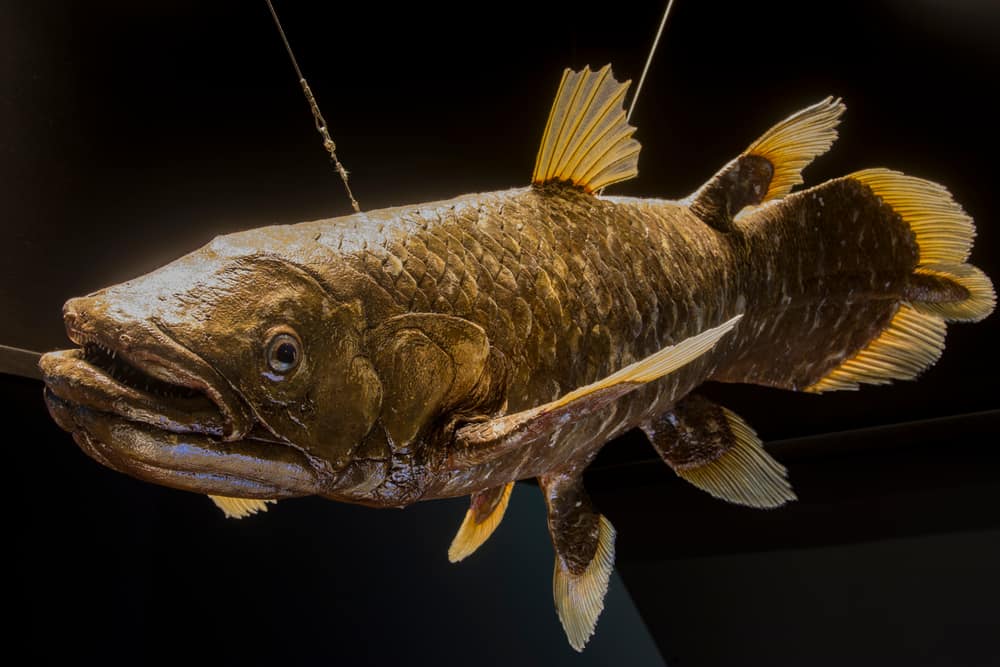
Thought to be extinct until the 20th century, Coelacanths have existed for 400 million years.
©Danny Ye/Shutterstock.com
Coelacanths evolved around 400 million years ago and were thought to be extinct until fishermen caught one in modern times. They spend their time drifting through nightly currents passively eating small fish.
These fish don’t have spines that protect their nerves. Instead, they have notochords that run alongside nerve cords along their backs. These notochords support their bodies like a spine and are considered the evolutionary precursor to modern backbones.
8. Oldest Vertebrate Animal Species: Lungfish at 400 Million Years
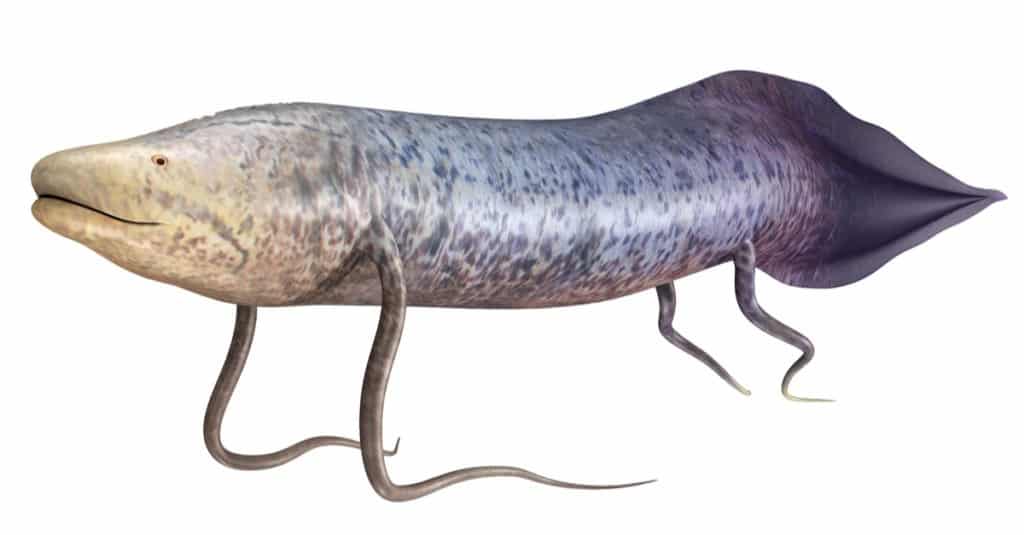
At 400 million years old, lungfish are the oldest living vertebrates.
©sciencepics/Shutterstock.com
Lungfish are the oldest vertebrates still alive on Earth at 400 million years old. They’re called lungfish because they have to breathe air periodically which also allows them to survive in drier conditions than other fish.
The lung they use to breathe isn’t standard at all. Instead, it is a unique swim bladder that also filters waste and gleans oxygen from the air. Their anatomy is interesting to scientists because it’s a rare example of animals transitioning from aquatic to terrestrial environments.
7. The Oldest Velvet Worm: 400 Million Years Ago
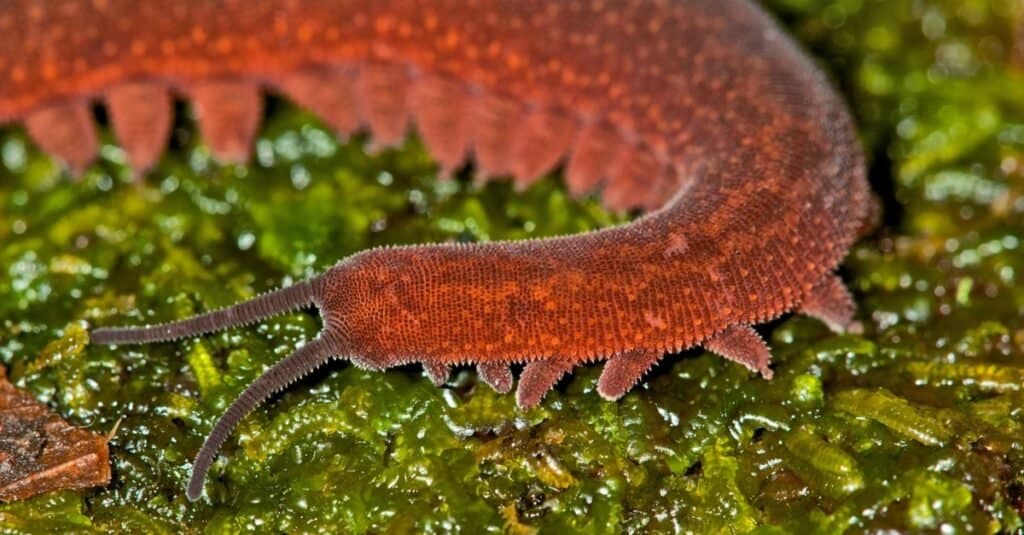
Velvet worms are mobile carnivores that existed on Pangea about 400 million years ago.
©Pedro Bernardo/Shutterstock.com
Velvet worms first evolved on Pangea around 400 million years ago and then diversified as populations spread farther apart. Gondwana developed which fragmented species diversity further. There are now living species spread through some of the rainforests on Earth.
These worms are mobile carnivores that are sometimes kept as pets. In the wild, they eat animals like spiders, lice, and termites. In captivity, substituting crickets is usually sufficient.
6. The Oldest Horseshoe Crab: 480 Million Years on Earth
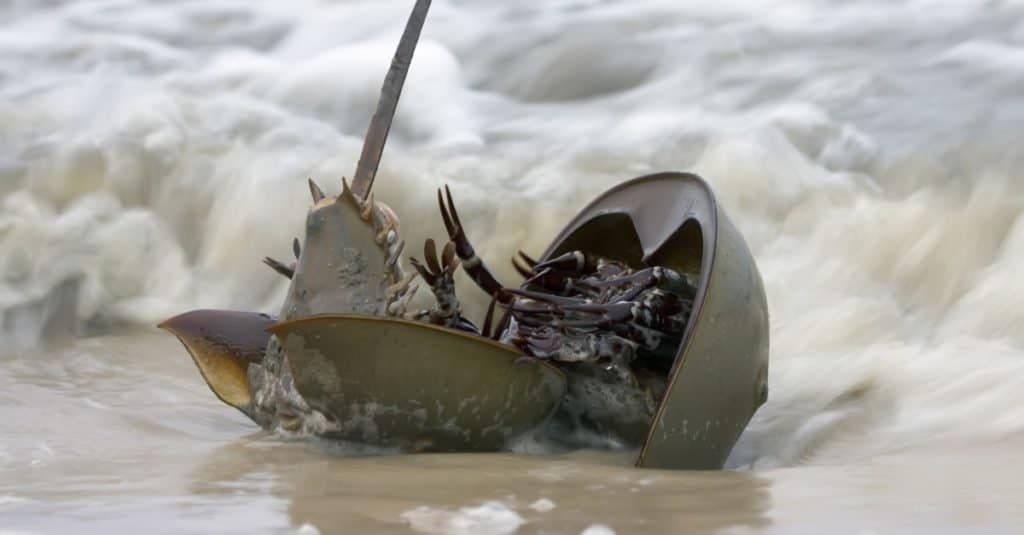
Horseshoe crabs evolved on Earth about 480 million years ago and lived alongside trilobites.
©Boris Z./Shutterstock.com
Horseshoe crabs are aquatic arthropods that came into existence around 480 million years ago. The largest population of horseshoe crabs in the world is in Delaware Bay in the states of New Jersey and Delaware. This Atlantic species of horseshoe crab swarm the beaches during summer mating seasons in groups of more than ten thousand per day.
While they aren’t closely related to true crabs, they are a close ancient relative of trilobites. Trilobites were once proliferous and during their 300 million-year reign, there were over 20,000 individual species. These animals completely died off during the Great Permian Extinction.
5. Nautilus: Animal Species Still Living After 480 Million Years
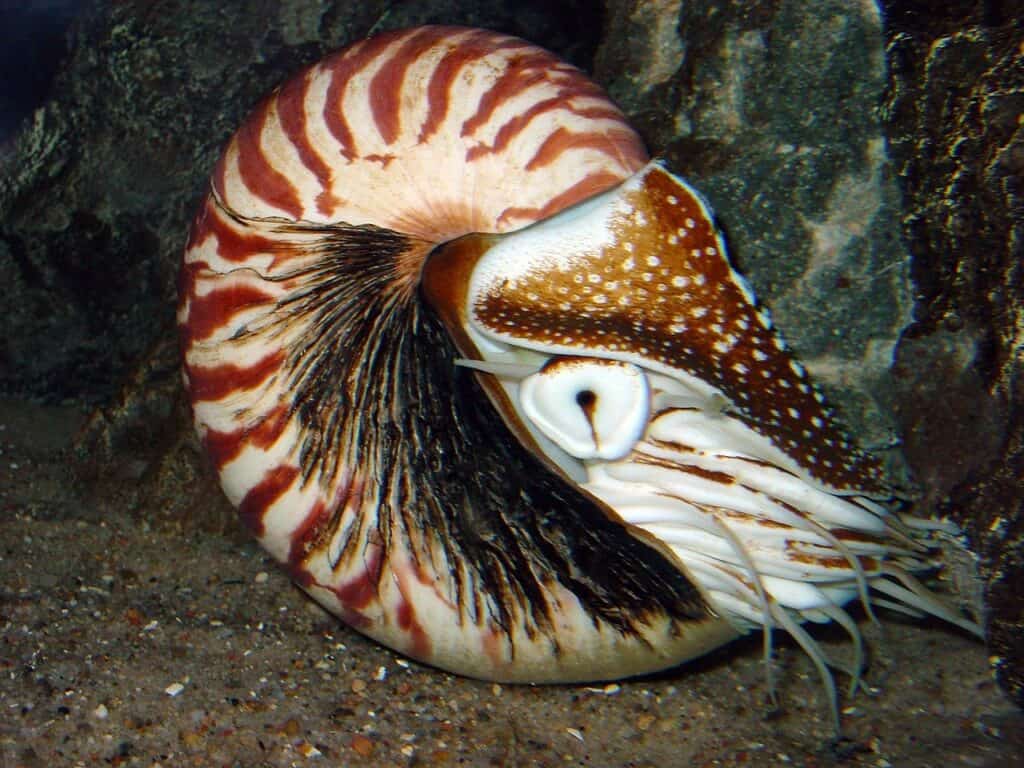
The nautilus has rocked its logarithmic spiraled shell for 480 million years.
©J. Baecker / public domain – License
A nautilus is an ancient mollusk that has been living on Earth for 480 million years. The shell of a nautilus is a natural example of a logarithmic spiral. The spiraled nautilus shell is created in segments as the animal builds bigger living chambers in succession as it grows.
4. The Oldest Jellyfish: 500 Million Years Old

Jellyfish
have existed for 500 million years because they tolerate low oxygen levels.
©IMC11/Shutterstock.com
Jellyfish are around 500 million years old and their longevity is made possible by their resiliency. These animals do not require as much oxygen as most other marine life which means they thrive in hostile water conditions.
3. Comb Jelly Species: Living 500 Million Years

Comb jellies have been around for 500 million years because they consume their own larvae in lean times.
©Takokat/Shutterstock.com
The comb jelly has existed for 500 million years and while comb jellies look like jellyfish, they are not the same thing. Though they are predatory and gelatinous like true jellyfish, comb jellies don’t sting.
A specific extant comb jelly, Mnemiopsis leidyi, has been observed cannibalizing its spawn to survive cold periods with no prey. When food is abundant before winter hits in northern waters, these comb jellies create huge larval blooms.
These larvae survive in the water column as all of the available prey is consumed. When the prey is gone, the surplus larvae are targeted. This tactic may be one of the reasons that comb jellies have survived so long on Earth.
2. Brachiopod: 530 Million Years Old
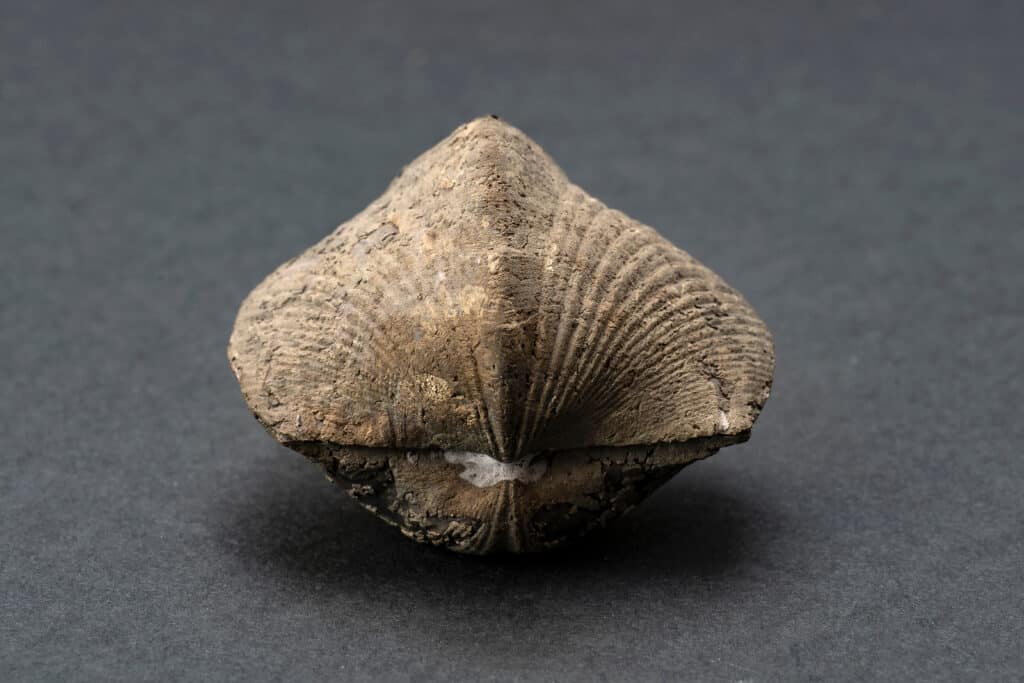
There have been tens of thousands of brachiopod species during their 530 million-year reign though only a few hundred still exist today.
©Myriam B/Shutterstock.com
Brachiopods came into existence around 530 million years ago. During the Paleozoic era over 250 million years ago, brachiopods dominated oceans as life diversified and ocean conditions fluctuated. There are tens of thousands of identified but extinct brachiopod species though only a few hundred still exist today.
The Great Permian Extinction around 250 million years ago decimated their populations and they never bounced back. They’re found in deep and cold oceans around the world and while they look like clams, they hold no real relation.
1. The Oldest Animal Species are Sponges: 600 Million Years Old
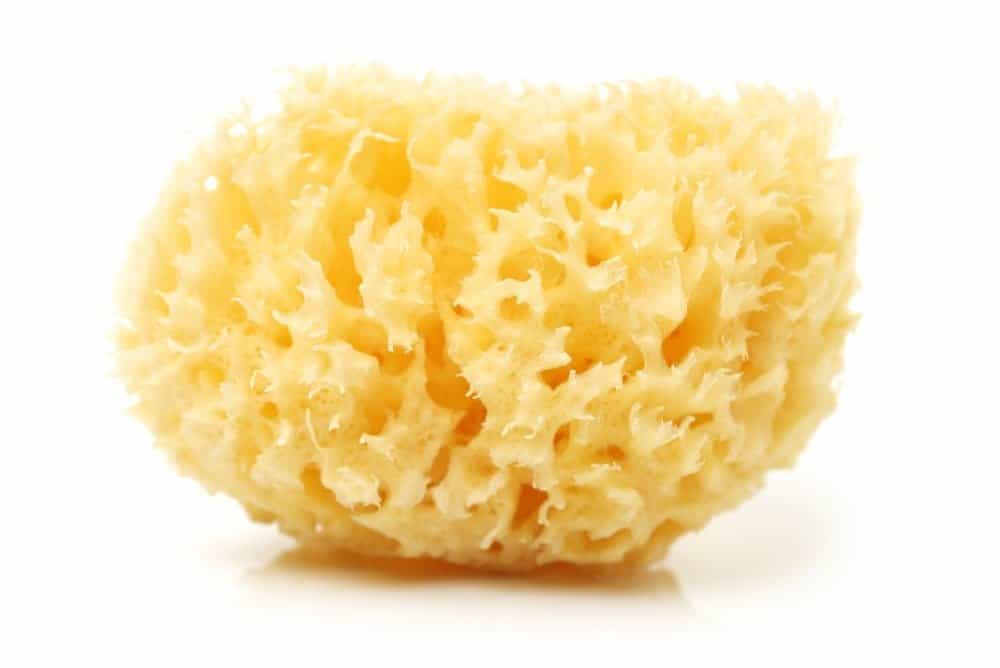
Sponges have been filtering water in the oceans for 600 million years.
©JIANG HONGYAN/Shutterstock.com
Sponges evolved on Earth around 600 million years ago. The phylum of animals called Porifera is colloquially known as sponges and sponges are the oldest living animals on Earth.
They’re simple animals that filter passing ocean currents through porous bodies made of channels. Kitchen sponges used to be made of these animals but this practice isn’t sustainable. Today, common cleaning sponges are made of synthetic materials.
Summary of 13 Oldest Animal Species Still Living on Earth
| Rank | Animal | Age |
|---|---|---|
| 1 | Sponges | 600 Million Years Old |
| 2 | Brachiopod | 530 Million Years Old |
| 3 | Comb Jelly Species | 500 Million Years Old |
| 4 | Jellyfish | 500 Million Years Old |
| 5 | Nautilus | 480 Million Years Old |
| 6 | Horseshoe Crab | 480 Million Years Old |
| 7 | Velvet Worm | 400 Million Years Old |
| 8 | Lungfish | 400 Million Years Old |
| 9 | Coelacanth | 400 Million Years Old |
| 10 | Lamprey | 360 Million Years Old |
| 11 | Tadpole Shrimp | 200 Million Years Old |
| 12 | Martialis Heureka Ant | 120 Million Years Old |
| 13 | Bird Louse | 100 Million Years Old |
The photo featured at the top of this post is © Openfinal/Shutterstock.com
Thank you for reading! Have some feedback for us? Contact the AZ Animals editorial team.







